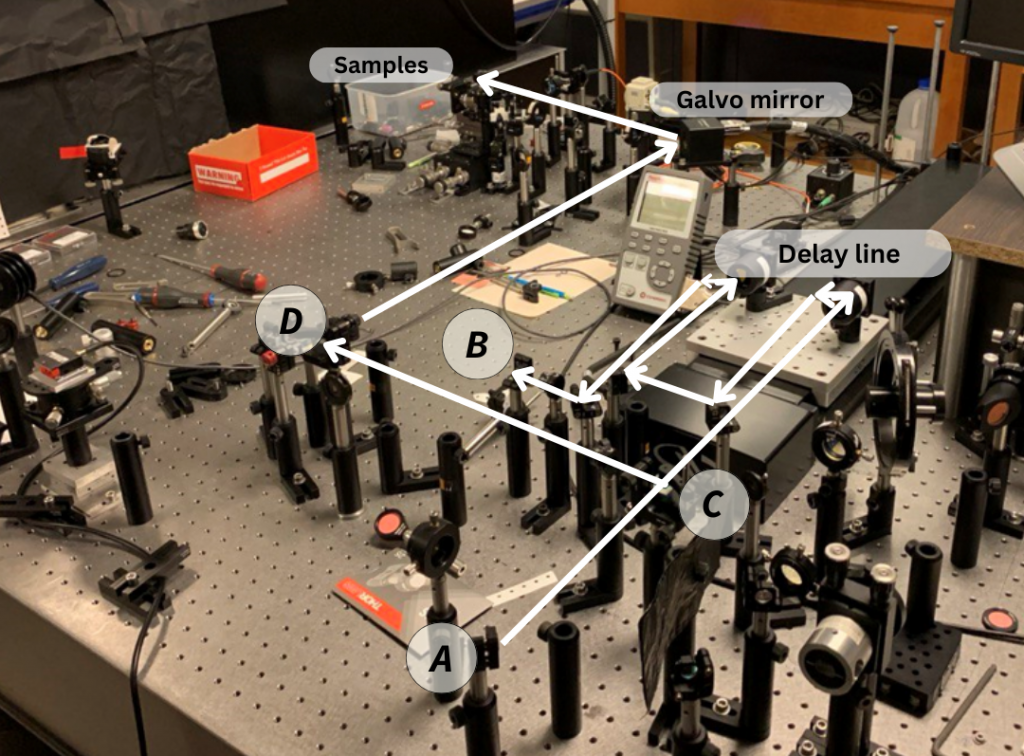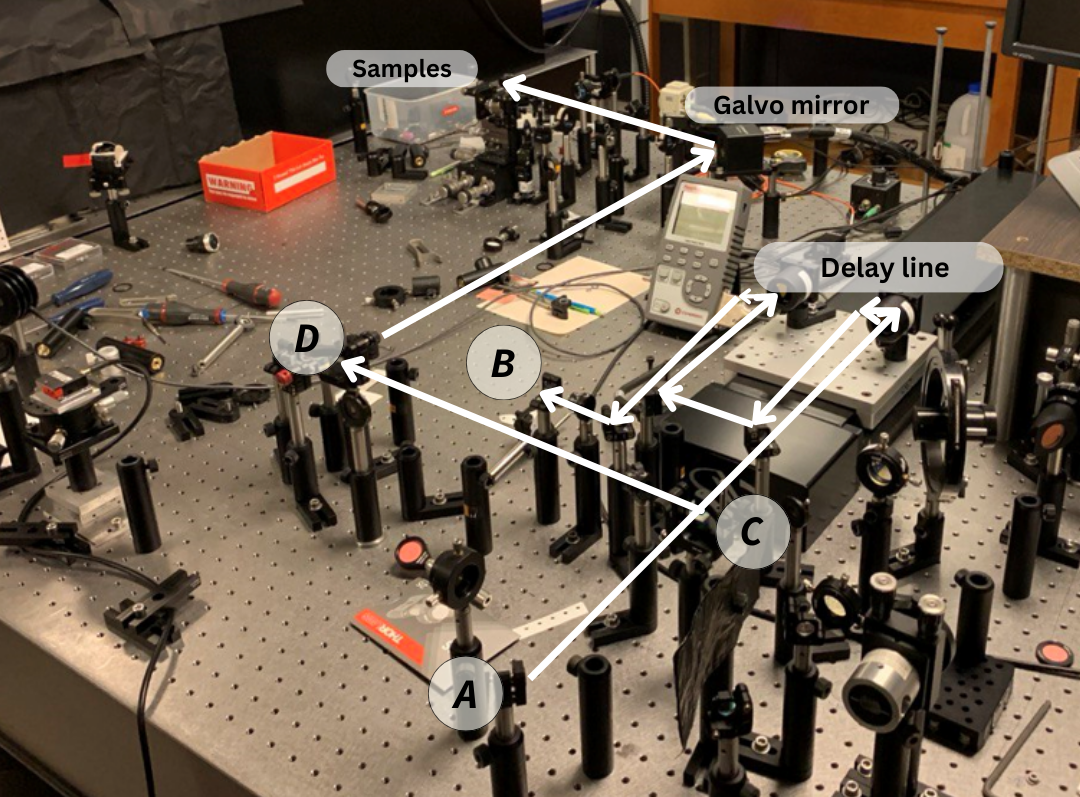Recently, our team at CNRS identified several updates that would enhance the technical capabilities of one of our pump-probe experimental systems, leading to a reassembly in the laboratory. The changes in the setup included an extension of the delay line and the integration of a new scanning system for the probe beam using a galvanometric mirror instead of the previous configuration using two motorized linear stages, which allows to scan the samples at increased speeds while reducing noise introduced by mechanical vibrations in the optical table.


The probe laser beam marked in white, coming from a mirror (labelled A in the picture) enters the delay line. After reflecting on a on a combination of mirrors and retro-reflectors, it reaches a mirror placed at the end of the delay line (point B) It is possible to change the total length of the delay line by displacing the two retro-reflectors, which are mounted on top of a motorized linear stage. This precise movement allows to tune the delay between the time of arrival of the pump beam (not shown in the picture) and the probe beam between 0 and 12.5 ns with a temporal resolution of a few picoseconds. By doing so, it is possible to study in detail the propagation of surface acoustic waves in the nanostructured samples of interest in Dynamo. After going back and forth through the delay line, the probe beam is redirected into our scanning system, which consists of a galvo mirror and a couple of lenses. After that, the light is focused onto the samples with a high numerical aperture objective.

